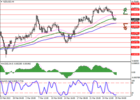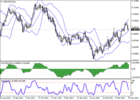SOLID ECN LLC
Solid ECN Representative
- Messages
- 516
GBPUSD, the pound is updating local highs
The British pound is trading with the uptrend against the US currency during the morning session, updating local highs from March 4.
Eurozone countries found themselves in a vulnerable position due to the developing crisis around Ukraine. The European authorities are preparing a new package of sanctions against the Russian economy, which may include significant restrictions or even a complete embargo on energy imports. This will lead to explosive inflation in commodity markets and call into question the ability to ensure energy security. Undoubtedly, high oil and gas prices will have an extremely negative impact on the UK economy, but London today is much less dependent on imports from the Russian Federation, and therefore joined the embargo initiated by the United States earlier.
Resistance levels: 1.33, 1.335, 1.3435, 1.35.
Support levels: 1.325, 1.32, 1.31, 1.305.
The British pound is trading with the uptrend against the US currency during the morning session, updating local highs from March 4.
Eurozone countries found themselves in a vulnerable position due to the developing crisis around Ukraine. The European authorities are preparing a new package of sanctions against the Russian economy, which may include significant restrictions or even a complete embargo on energy imports. This will lead to explosive inflation in commodity markets and call into question the ability to ensure energy security. Undoubtedly, high oil and gas prices will have an extremely negative impact on the UK economy, but London today is much less dependent on imports from the Russian Federation, and therefore joined the embargo initiated by the United States earlier.
Resistance levels: 1.33, 1.335, 1.3435, 1.35.
Support levels: 1.325, 1.32, 1.31, 1.305.

